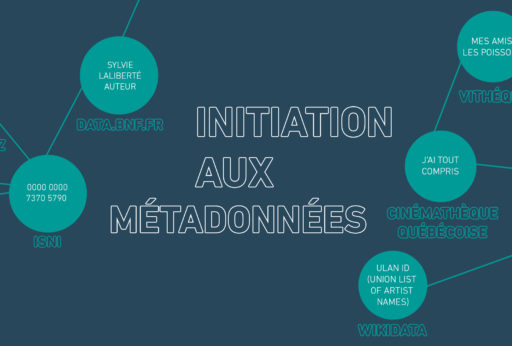This summer, I presented five project management apps. I also mentioned the project we had with the CQAM team to explore Airtable as a management system for our membership. After a few months of implementation and testing, I’m happy to offer you some feedback on our experience!
Context and objectives
The context in which our approach took place was the following: in order to keep track of our membership, we were using a version of FileMaker Pro that was inexorably tending towards obsolescence. The software was installed on a computer at the office, whose operating system could no longer be updated, because the version of the software was not compatible with the most recent “mac OS” evolutions.
We then agreed as a team to make a list of our needs by imagining our dream database. Here are the wishes that emerged from the discussion:
- remote access for the whole team (cloud computing software);
- minimized costs;
- simple and user-friendly interface;
- possibility to customize the database;
- autonomy in the use and customization of the database;
- possibility to automate simple and repetitive processes;
- link between the new database and our mailchimp audience, so that updates of our members’ information are automatically integrated into it.
With this grocery list in hand, I did my research and proposed to the team to test Airtable. We opened an account and took advantage of the free trial period of the “pro” package, after which we found the tool and its features satisfactory enough to get started.
Features
Among the functionalities that we find very practical within the team are views, forms, automations and apps.
Views allow us to create different ways to visualize the data in the database: in the form of grids, by sorting and grouping the information according to different criteria (a visualization mode similar to that of an excel spreadsheet) or in the form of a gallery, by presenting each entry in the database in the form of a rectangular card.
We then use the forms, shared via hyperlinks on our website, to automatically compile member information when they join (see the CQAM membership form for individuals, for example). You will no longer need to fill out a Word or PDF form and we will no longer have to enter this information manually into our database!
Automations make it possible to send automated emails, among other things. We program the conditions that must be met for an action to be triggered (an example: when the number of days before the expiration date of a member’s membership drops below 30, an automatic email could be sent to this member inviting them to renew their membership).
Also, with a Pro Airtable account, we have access to some useful apps, including Page designer. This tool allows us to create a document template (a receipt for the membership fee, for example) and to generate PDFs from this template that will include the data recorded in the base. This allows us to automatically generate receipts with information specific to each member: name, address, date of payment, etc.
Finally, it is always possible to download a copy of an Airtable base in CSV format in order to keep local backups and archives of your data. The files in CSV format can be read with various software and applications, including the widely used Excel, Libre Office and Google Sheet.
So far, our team is very satisfied with the choice of this tool and the way we have structured our first database for the management of membership. We will now focus on the creation of a base for the management of our various activities: training, workshops, events, etc!
The tone of this column may seem very optimistic – maybe we’re on a kind of honeymoon with our app – but what we can remember is that there are now, in the vast universe of web applications, simple, inexpensive and functional solutions for small organizations looking for a helping hand to put their operations in order.
Two templates to share
We therefore give interested parties access to a calendar template (in French) that outlines the major steps to be taken in the implementation of this type of tool. If the work is done internally, a two-month timeline may be realistic. If your team prefers to call on external expertise, the timeline may be a little shorter, depending on your commitment to the process and your availability for coordination, testing and validation.
And to close this column in beauty/practicality, in order for our members and the Quebec arts and culture milieu to benefit from our experimentation, we are also happy to share a simplified template of our base, available to all in the Airtable “universe”! You can copy this base with a simple click and make it your own by customizing it to your liking. We hope that this template will inspire you or save you time if you wish to take a similar step.
*edit (april 2021) : after a year of testing, we improved our template here!
If you have any questions on the subject, let me know!




